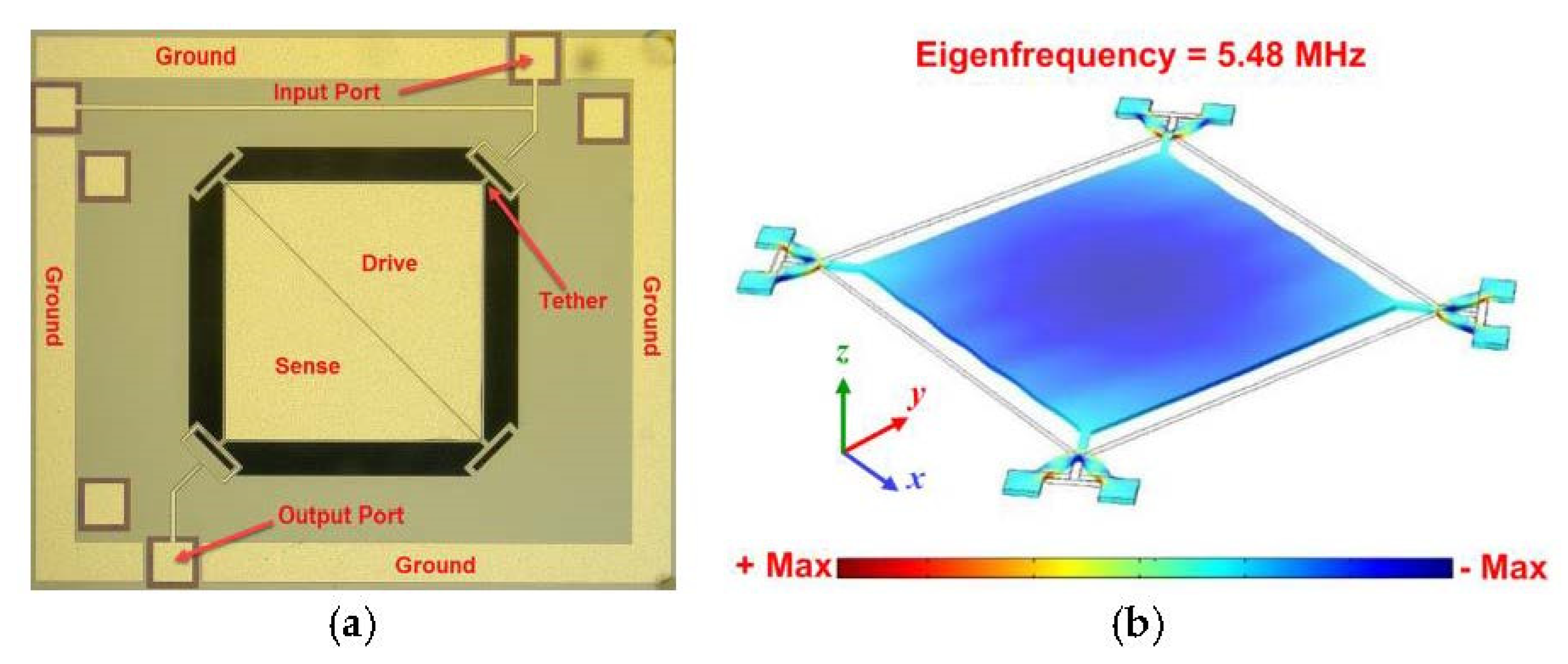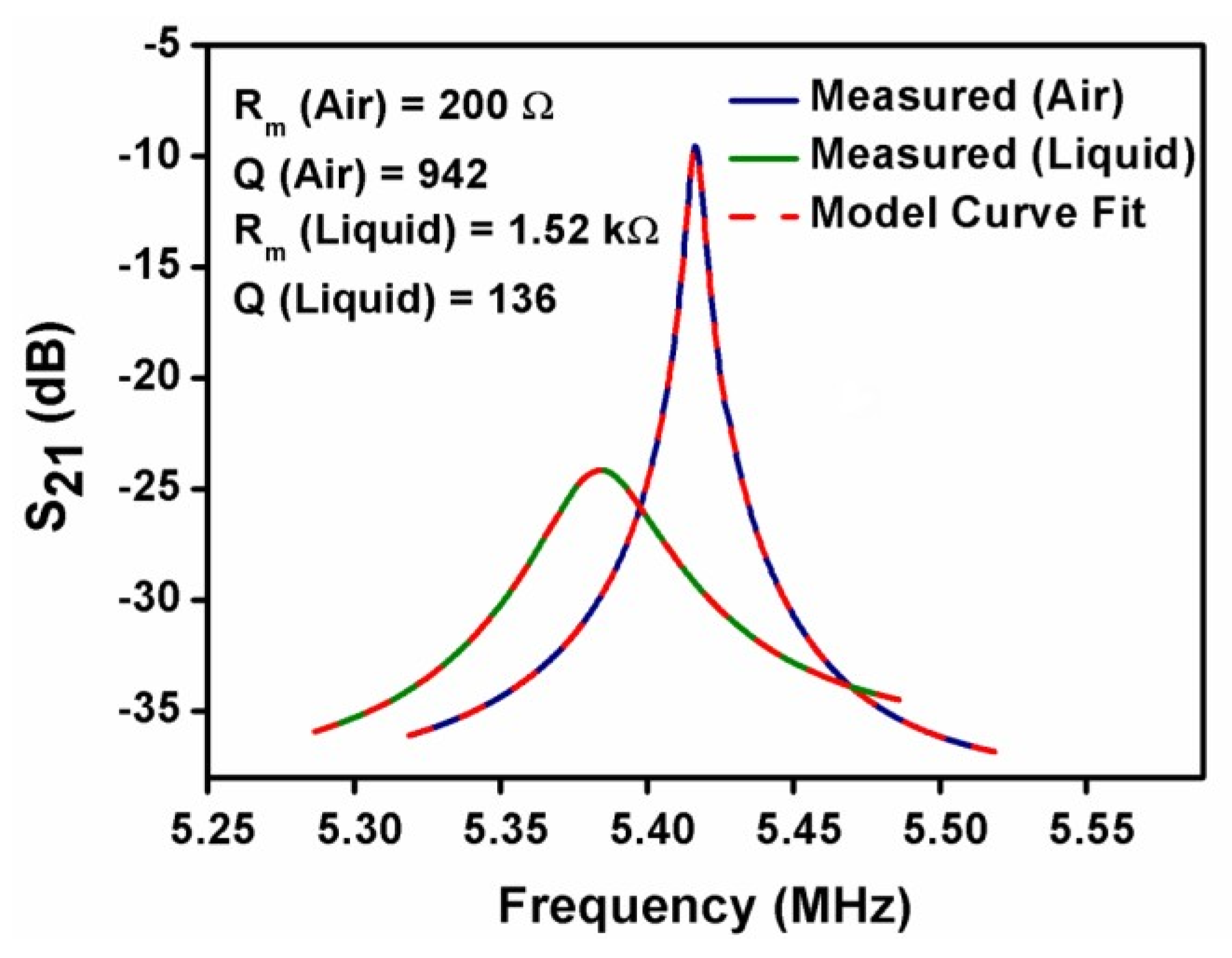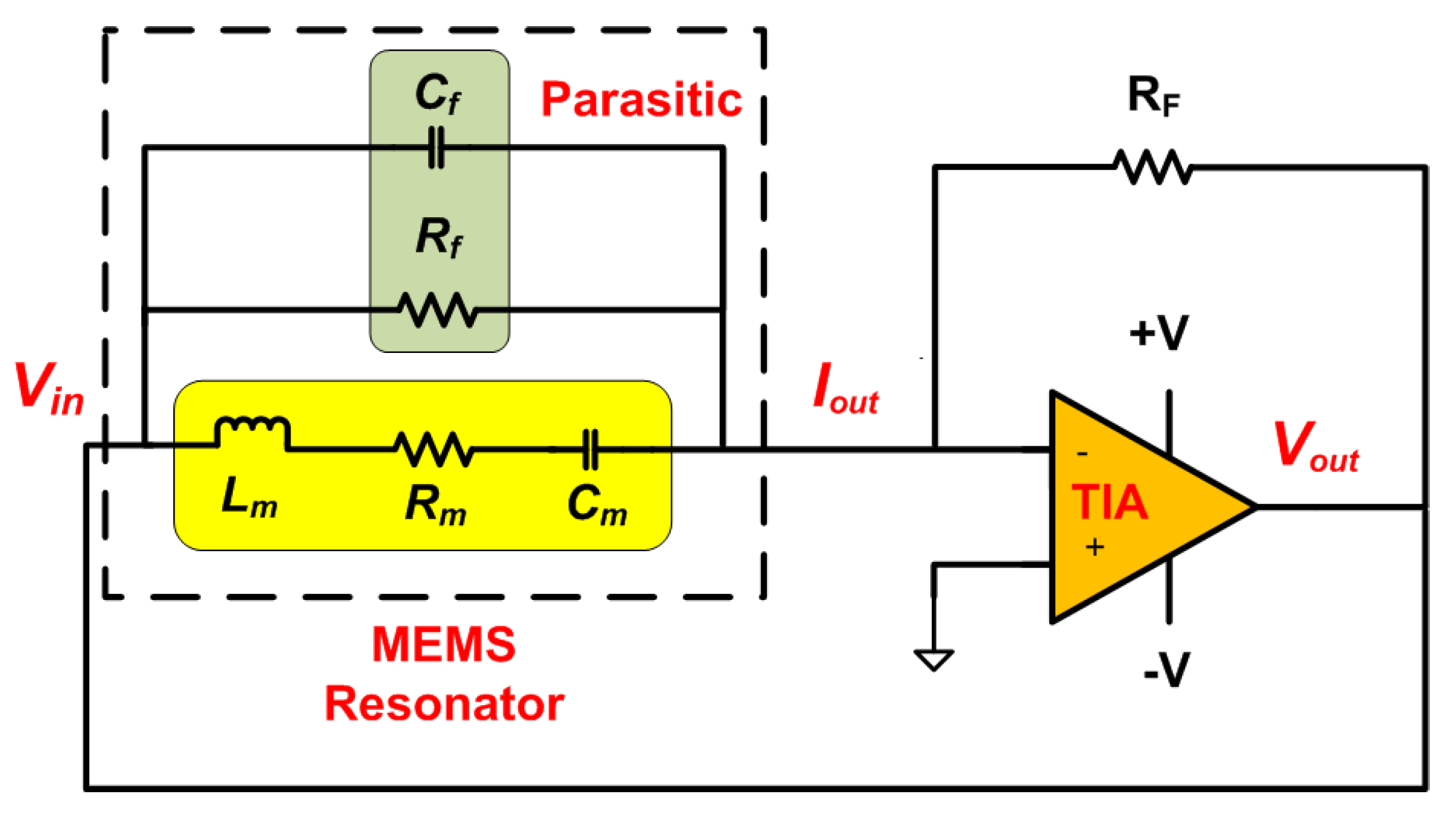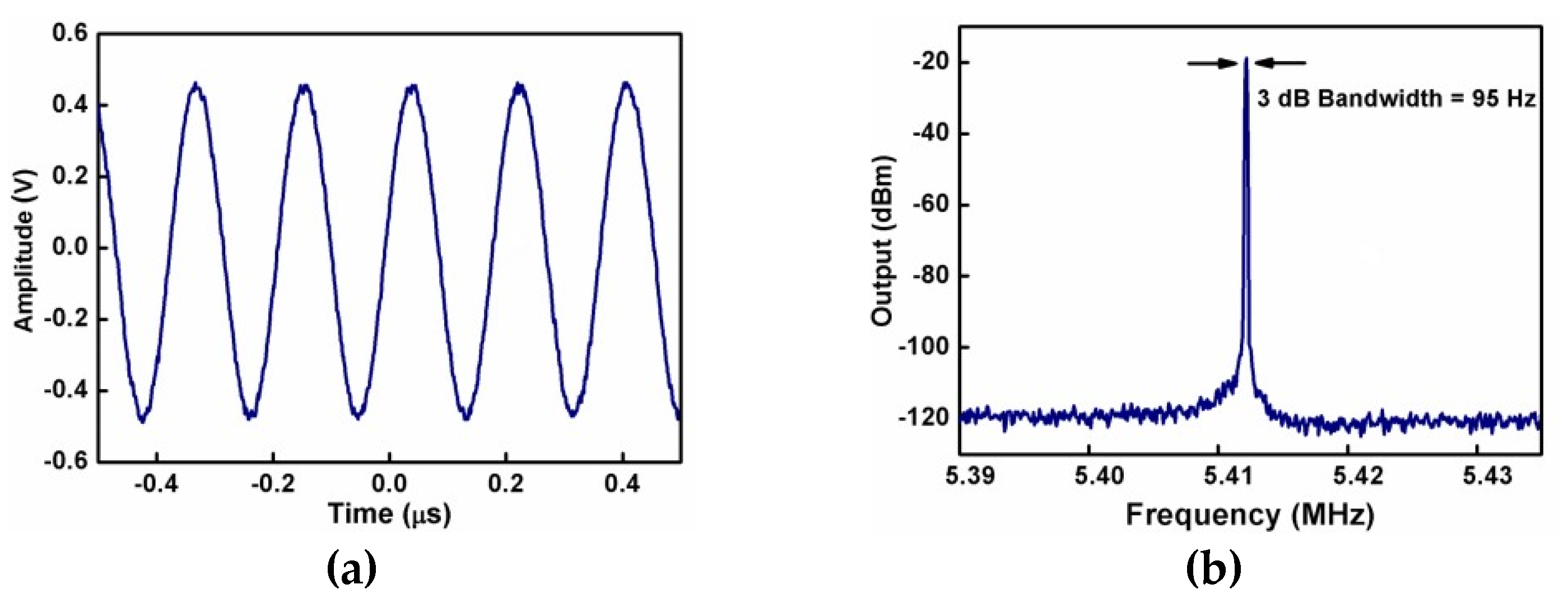Self-Sustaining Square-Extensional Mode Resonator Oscillator for Mass Sensing in Liquid †
Abstract
:1. Introduction
2. MEMS Resonator Design & Simulation
3. Experimental Results
3.1. Open-Loop Measurement Result
3.2. Close-Loop Implementation
4. Conclusions
Author Contributions
Acknowledgments
Conflicts of Interest
References
- Manzaneque, T.; Ruiz-Diez, V.; Hernando-Garcia, J.; Wistrela, E.; Kucera, M.; Schmid, U.; Sanchez-Rojas, J.L. Piezoelectric MEMS resonator-based oscillator for density and viscosity sensing. Sens. Actuators A 2014, 220, 305–315. [Google Scholar] [CrossRef]
- Zhao, X.; Pan, F.; Ashley, G.M.; Garcia-Gancedo, L.; Luo, J.; Flewitt, A.J.; Milne, W.I.; Lu, J.R. Label-free detection of human prostate-specific antigen (hPSA) using film bulk acoustic resonators (FBARs). Sens. Actuators B 2014, 190, 946–953. [Google Scholar] [CrossRef]
- Lin, A.T.-H.; Yan, J.; Seshia, A.A. Electrically addressed dual resonator sensing platform for biochemical detection. J. Microelectromech. Syst. 2012, 21, 34–43. [Google Scholar] [CrossRef]
- Agache, V.; Blanco-Gomez, G.; Cochet, M.; Caillat, P. Suspended nanochannel in MEMS plate resonator for mass sensing in liquid. In Proceedings of the IEEE MEMS 2011, Cancun, Mexico, 23–27 January 2011. [Google Scholar]
- Lee, J.; Shen, W.; Payer, K.; Burg, T.P.; Manalis, S.R. Toward attogram mass measurements in solution with suspended nanochannel resonators. Nano Lett. 2010, 10, 2537–2542. [Google Scholar] [CrossRef] [PubMed]
- Ziegler, D.; Klaassen, A.; Bahri, D.; Chmielewski, D.; Nievergelt, A.; Mugele, F.; Sader, J.E.; Ashby, P.D. Encased cantilevers for low-noise force and mass sensing in liquids. In Proceedings of the 27th IEEE MEMS 2014, San Francisco, CA, USA, 26–30 January 2014. [Google Scholar]
- Kaajakari, V.; Mattila, T.; Oja, A.; Kiihamaki, J.; Seppa, H. Square-extensional mode single-crystal silicon micromechanical resonator for low phase noise oscillator applications. IEEE Electron. Device Lett. 2004, 25, 173–175. [Google Scholar] [CrossRef]
- Lin, A.T.-H.; Yan, J.; Seshia, A.A. 2.2 MHz piezoresistive MEMS oscillator operating in air. In Proceedings of the Eurosensors XXIV, Linz, Austria, 5–8 September 2010. [Google Scholar]




Publisher’s Note: MDPI stays neutral with regard to jurisdictional claims in published maps and institutional affiliations. |
© 2018 by the authors. Licensee MDPI, Basel, Switzerland. This article is an open access article distributed under the terms and conditions of the Creative Commons Attribution (CC BY) license (https://creativecommons.org/licenses/by/4.0/).
Share and Cite
Begum, H.; Ali, A.; Lee, J.E.-Y. Self-Sustaining Square-Extensional Mode Resonator Oscillator for Mass Sensing in Liquid. Proceedings 2018, 2, 976. https://doi.org/10.3390/proceedings2130976
Begum H, Ali A, Lee JE-Y. Self-Sustaining Square-Extensional Mode Resonator Oscillator for Mass Sensing in Liquid. Proceedings. 2018; 2(13):976. https://doi.org/10.3390/proceedings2130976
Chicago/Turabian StyleBegum, Habiba, Abid Ali, and Joshua En-Yuan Lee. 2018. "Self-Sustaining Square-Extensional Mode Resonator Oscillator for Mass Sensing in Liquid" Proceedings 2, no. 13: 976. https://doi.org/10.3390/proceedings2130976
APA StyleBegum, H., Ali, A., & Lee, J. E.-Y. (2018). Self-Sustaining Square-Extensional Mode Resonator Oscillator for Mass Sensing in Liquid. Proceedings, 2(13), 976. https://doi.org/10.3390/proceedings2130976





